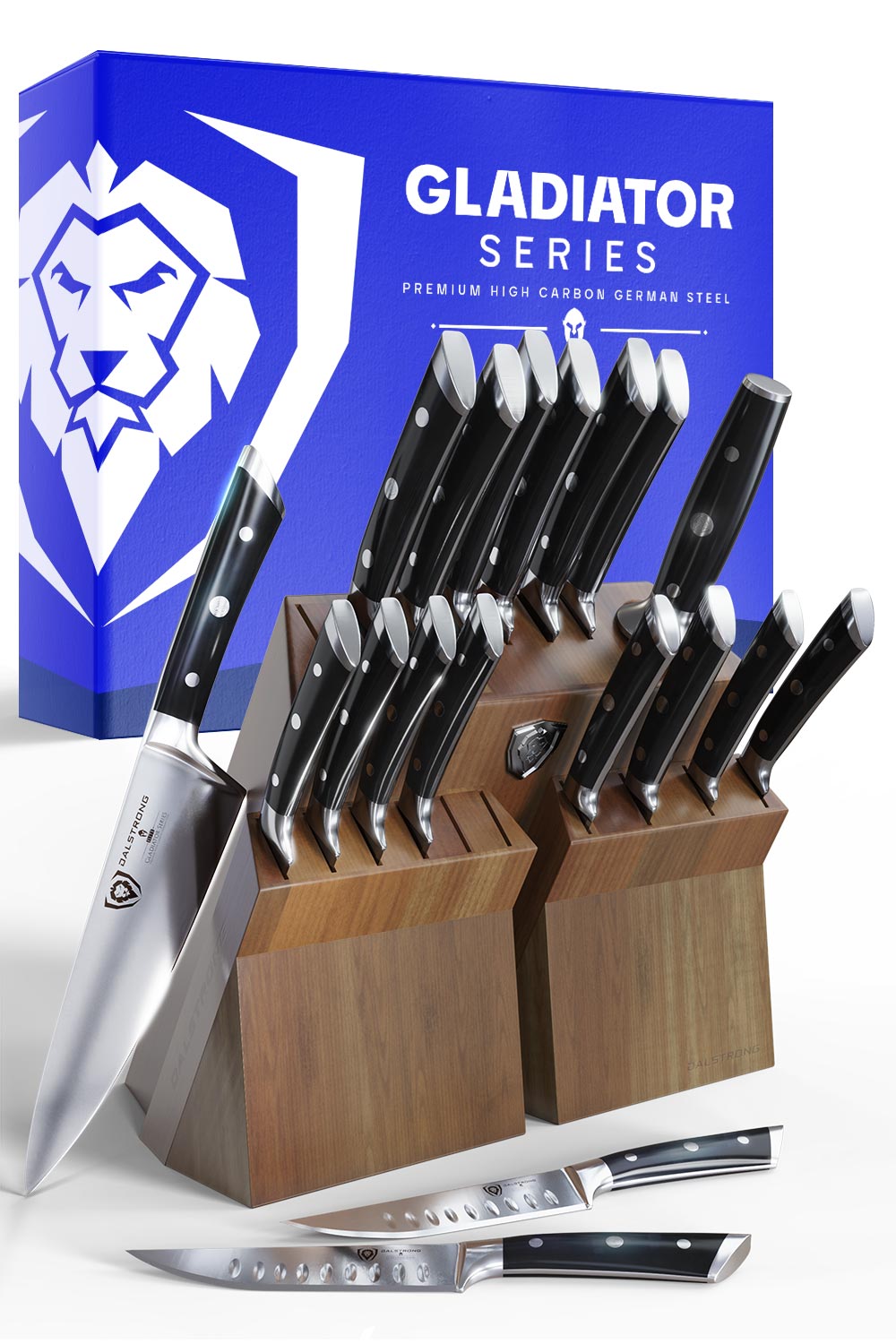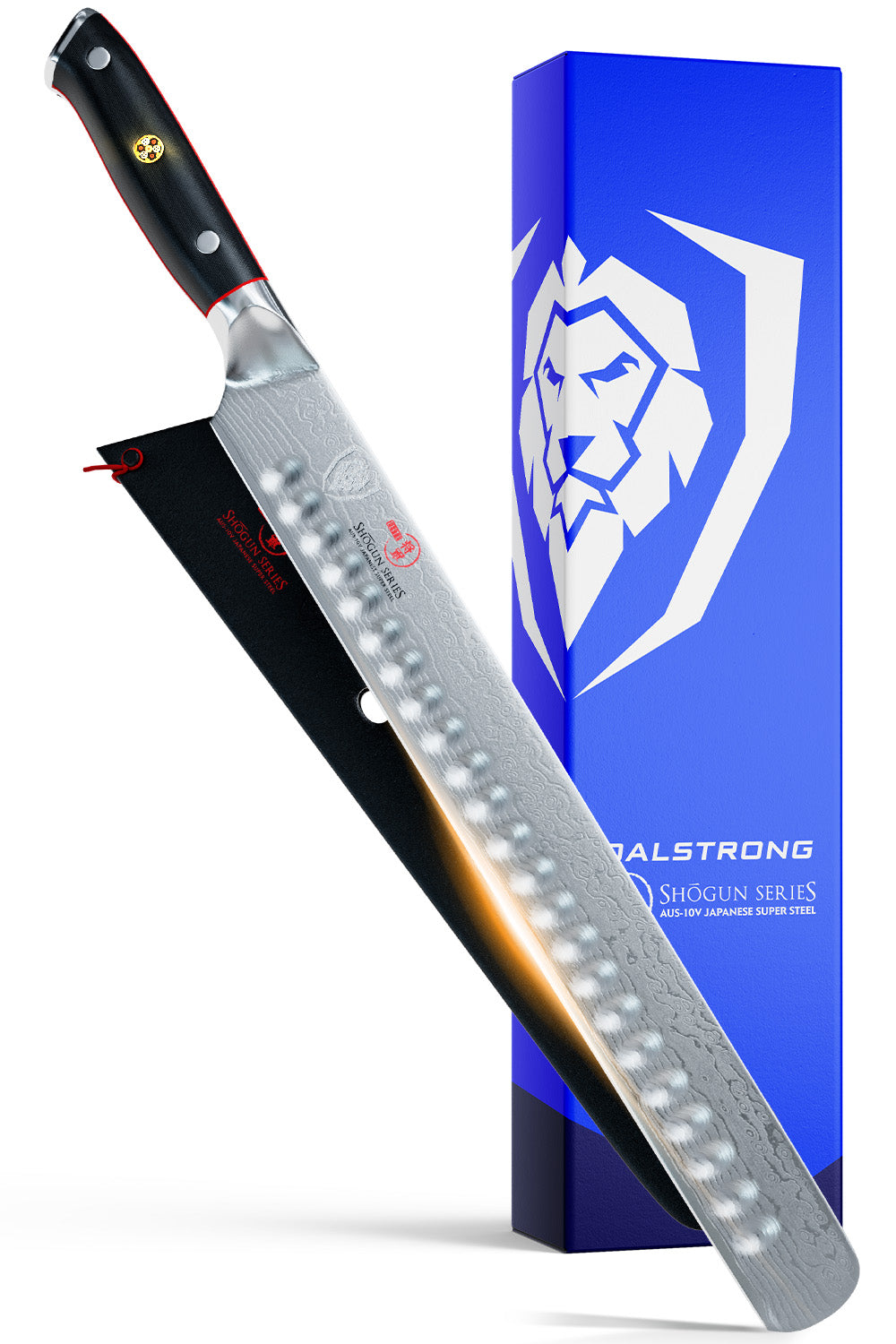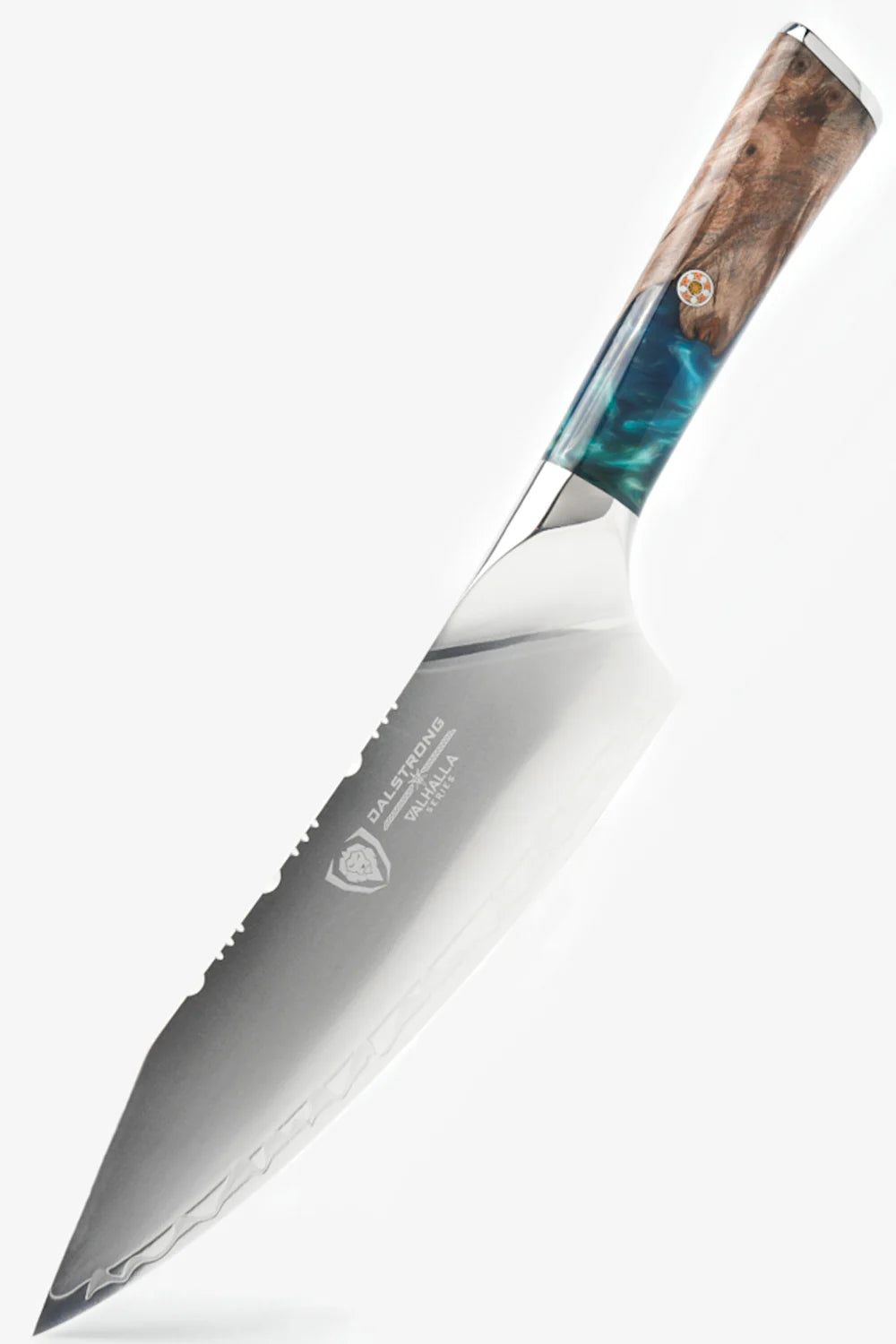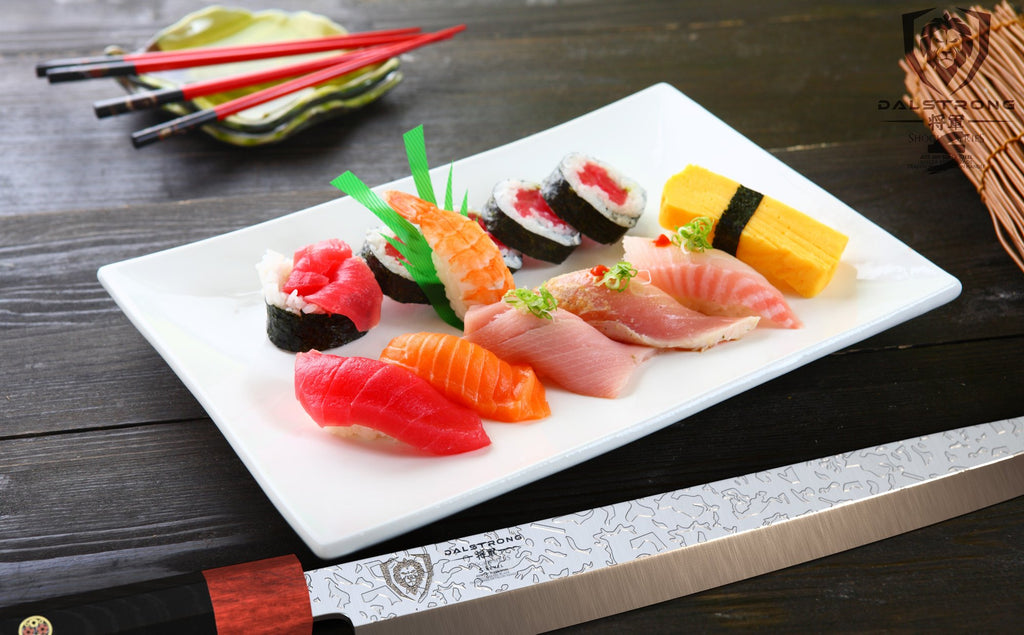
How To Make Sushi
- Make the rice.
- Cut and prepare your sushi fillings (fish, veggies, etc.).
- Layer: bamboo rolling mat, saran wrap, nori seaweed sheet, rice
- Lay thin layer of fish and veggies on rice.
- Roll it up until top and bottom edges of nori meet; seal edges together.
- Cut into bite-sized pieces and serve.
Attempting homemade sushi may seem like a daunting endeavor, especially if you’ve ever watched Jiro Dreams of Sushi. Sushi chefs often spend their entire lives perfecting the art of making sushi! But learning how to make sushi at home is actually relatively easy with the right tools and tips. A sushi party with other beginners is a really fun way to get your feet wet (even if it’s over Zoom!). Watching a few do-it-yourself sushi-making videos may be helpful to really get the hang of the technique. And with a little practice you’ll be on a “roll”!
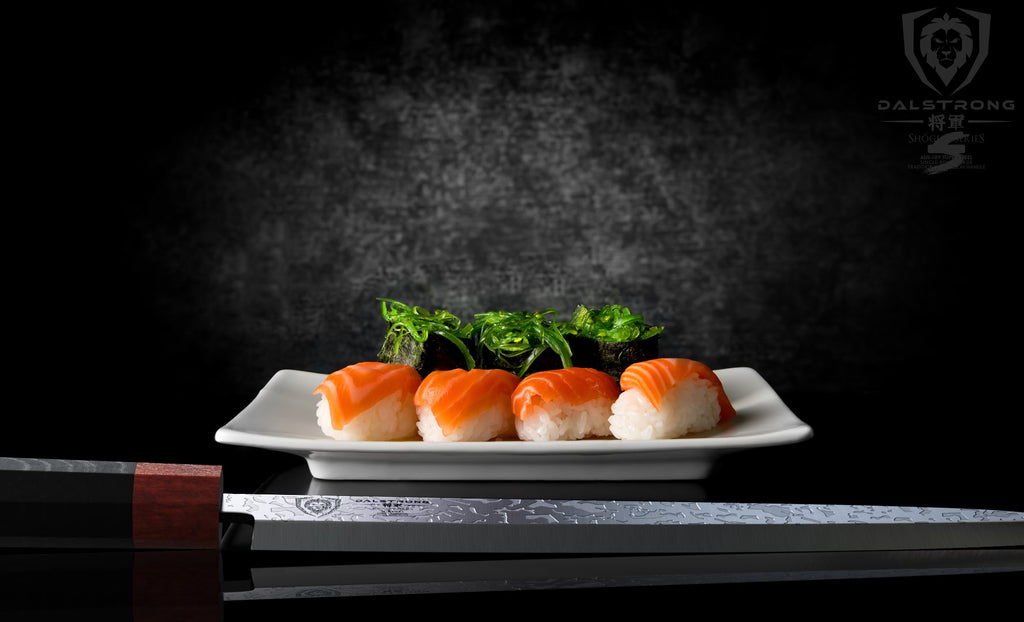
What You'll Learn About Making Sushi
- Types of Sushi
- Tools You Need To Make Sushi
- How To Make Sushi Rice
- The Fish
- How To Make Sushi--Step By Step
- Traditional Sushi Fillings and Recipes
- Frequently Asked Questions About Sushi
- More Great Recipes
1. Types of Sushi
|
Type of Sushi |
Description |
Notes |
|
Maki |
Nori (seaweed) on the outside, rice and sushi fillings on the inside |
What most people think of as sushi rolls; it is acceptable to eat with chopsticks or your hands |
|
Uramaki |
Inside-out rolls (similar to maki rolls, but rice is on the outside, sushi fillings on inside) |
Often decorated with toppings (fish roe, sesame seeds, tempura flakes) or sauces |
|
Temaki |
Large cone-shaped sushi hand roll |
Nori on the outside wrapping the rice and sushi fillings; rolled and eaten with hands |
|
Nigiri |
A slice of (usually raw) fish or seafood on top of hand-formed sticky rice |
Boiled shrimp or grilled eel are the exceptions to “usually raw” for nigiri sushi. |
|
Sashimi |
Raw fish or seafood served alone |
Technically not sushi since sushi features rice, sashimi is perfect for people who want to enjoy the pure flavor of the fish. |
2. Tools You Need To Make Sushi
- Rice cooker
- Apron
- Sushi mat (bamboo rolling mat)
- Saran wrap (optional)
- Very sharp knives (preferably a Yanagiba sushi knife if you’re an aspiring amatuer sushi chef)
- Rice paddle
- Cutting board
3. How To Make Sushi Rice

Most sushi chefs will tell you that making perfect sushi rice is just as important as selecting and preparing the fresh fish. They consider it an art form. Learning to make perfectly soft and sweet sticky rice is key to good homemade sushi. First, make sure you buy white, short grain rice (medium grain calrose rice is also acceptable) labeled “sushi rice”. Short grain rice is starchy and absorbent, which is what makes it sticky. Follow this recipe for perfect sushi rice:
Sushi Rice Recipe
Yields 3 cups of cooked rice
Prepare 1 cup of dry sushi rice per 3 rolls.
Ingredients:
1 cup sushi rice grains
3 tablespoons rice vinegar
2 teaspoons sugar
½ teaspoon kosher salt
Preparation:
- Rinse the uncooked rice. Put the rice grains in a bowl and continue washing in cold water until the water is clear. Strain rice in mesh sieve or colander.
- Using a 1:1 rice to water ratio, put uncooked rice grains and water in bowl of rice cooker. Times may differ depending on your type of rice cooker, so set and cook according to the instructions for your specific model. (You can also cook sushi rice on the stovetop, of course.)
- Once the timer on the rice cooker indicates the rice is done, leave the rice covered for 10 minutes. Lift lid, fluff rice with rice paddle and let the rice rest for another 5 minutes uncovered.
- While rice is resting, prepare your vinegar mixture. An easy vinegar mixture recipe is 2 tablespoons rice vinegar, 2 teaspoons sugar and 1/2 teaspoon kosher salt per cup of dry rice. Combine these ingredients in a small saucepan and simmer until the sugar and salt have dissolved. Do not let the vinegar mixture come to a boil. (To skip this step, you can also buy seasoned rice vinegar which already contains the sugar and salt.)
- After the rice has cooled a bit, drizzle the vinegar mixture into the rice. With your rice paddle, gently fluff and toss the rice to evenly distribute the mixture. Be careful not to mash the rice.
The rice can be made a few hours ahead of time, but do not refrigerate the cooked rice. Cover it with a damp towel and leave it at room temperature.
4. The Fish

Whether tuna, salmon or yellowtail, arguably just as important as the rice is the fish. And if you’re going to the trouble of learning how to make homemade sushi, you might as well know the ins and outs of the fish.
It’s extremely important to buy high quality sushi grade fish since it will be eaten raw. What is sushi grade fish anyway? Basically it’s the highest quality fish you can buy, and it’s safe to be eaten raw. It does not necessarily need to be fresh fish, however. In fact, it’s best to buy fish that has been flash-frozen right on the boat. Not only is it safer, but it also preserves the texture and freshness of the fish.
You’re likely to find the highest quality fish at a fish market that has knowledgeable staff and gets in frequent shipments. You want to look for bright-colored fish that doesn’t have a smell. (Darkening fish with a strong odor indicates the fish is old.) Buy them in filets rather than steaks, as filets are easier to slice for sushi. Raw fish begins to degrade rather quickly, so purchase your fish the same day you’re planning to make your sushi.
Though there are many ways to cut sushi fish, depending on the type of fish and what type of sushi you are preparing, the most common is the rectangular cut, which is cutting across the grain to make thin rectangular slices. And most importantly, carefully slice the fish by pulling the blade back from the heel of the knife to the tip; do not saw it. This is where a very sharp sushi knife is indispensable. Learn how to sharpen your knife here.
5. How To Make Sushi--Step By Step
Though there are a few different types of sushi, we’ll focus here on how to make a maki roll, which is most common. You can also make the uramaki rolls using this technique; just reverse the order of the sticky rice and nori seaweed.
- Make the sushi rice (see instructions above)
- Prepare your sushi fillings: Using a sharp knife, julienne your vegetables into long thin strips. Slice your fish into long, thin rectangular strips. Put all ingredients into small bowls, ready for your maki roll assembly.
- Layer your sushi mat with saran wrap to keep the rice from sticking to it. Next, lay a half sheet of nori seaweed on your plastic wrap (shiny side down). On top of the nori sheet, place ½ cup of sushi rice and spread it across. Leave about ½ inch of nori exposed at the top. Use your fingers to press a small groove in the middle of rice, the length of the sushi mat.
- Place your desired sushi fillings on top of the rice, along the groove.
- Using your fingers to hold the ingredients in place, roll the sushi mat forward and away from you, curling the nori sheet and rice around the fillings. Gently squeeze and seal the roll where the extra ½ inch of nori is exposed.
- Move your maki roll to a cutting board, and cut into bite-sized pieces.
Pro Tips:
- To keep rice from sticking to your hands when you are rolling, prepare a bowl of 8 oz. water and 2 tbsp of vinegar to dip your fingers in.
- According to Japanese tradition, you should use an odd, not even, number of ingredients in your rolls.
- Select high quality seaweed (nori) for your sushi! Your seaweed should be dark green in color and thick so it won’t come apart when you’re rolling.
6. Traditional Sushi Fillings and Recipes
While there are many traditional recipes for sushi, it can also be fun to play around with different ingredient combinations, particularly if you’re having a sushi party!
Here are some of the traditional ingredients for sushi:
|
Fish |
Other seafood |
Vegetables/Fruits/ Other |
Toppings/Sides |
Sauces |
|
Tuna Salmon Yellowtail Halibut Flounder Mackerel Seabass Snapper Swordfish Gizzard Shad Grouper Tilefish |
Clams Scallops Squid Octopus Eel Shrimp Crab Abalone Lobster Conch Sea urchin |
Avocado Asparagus Cucumber Carrot Eggplant Radish Shiitake Mushroom Scallions Sweet potato Mango Pickled Plum -- Egg (Omelet) Tofu Cream Cheese |
Roe (Tobiko) Sesame Seeds Tempura Flakes -- Pickled Ginger Wasabi |
Soy sauce Eel sauce Spicy Mayo Miso Mayo Sesame Oil Rice Wine Vinegar |
Some of most common sushi filling recipe combinations:
- Spicy Tuna Roll: tuna, avocado, cucumber, spicy mayo, sesame seeds
- California Roll: crab, avocado, cucumber
- Veggie Roll: carrot, cucumber, avocado, sesame seeds
- Philly Roll: smoked salmon, cream cheese, cucumber
- Salmon Avocado: salmon, avocado
- Yellowtail Scallion: yellowtail, scallions
- Unagi: Barbeque eel and avocado
- Lobster Roll: lobster, avocado, cucumber, spicy mayo, roe
- Dragon Roll: eel or shrimp tempura, cucumber (inside); avocado, spicy mayo, sesame seeds, tobiko (outside)
*Pair all rolls with pickled ginger, a dollop of wasabi and a side of soy sauce.
7. Frequently Asked Questions About Sushi
Is it expensive to make your own sushi?
Though purchasing high quality ingredients such as sushi grade fish is relatively expensive, it is still less expensive than a sushi dinner for two at a nice sushi restaurant, especially once you have all the needed tools and staple ingredients. And if you host a sushi party and everyone brings one or two sushi fillings, you’ll split the cost and eat good sushi at very little cost to each person!
Is sushi healthy for you?
Yes! With a few exceptions, most ingredients in sushi are low in calories and high in vitamins and minerals. Salmon, high in omega-3s, is one of the best fish for you. The seaweed in nori is considered a superfood and full of amino acids, vitamins and minerals. Some fish however, can contain high levels of mercury, so it’s best to consult this guide to know which ones are safest.
Is it safe to eat leftover sushi?
No. Because the risk of bacteria in raw fish increases the longer you keep it, it is not recommended to eat leftover sushi.
Can you use regular rice for sushi?
It is best to use short-grain Japanese rice for sushi. Short grain rice is much more starchy and absorbent than long grain rice, which is what gives it the sticky quality needed to make great sushi rolls. Calrose rice is medium-grain Japanese-style rice (grown in California) that is sometimes used, but it is not ideal. Long grain rice such as basmati or jasmine rice should not be used.
Do you need to follow a recipe to make sushi?
It’s definitely important to follow a recipe to make perfect sushi rice. If you want to experiment with different sushi filling combinations, a recipe is not necessarily needed, but you do want to follow the step-by-step instructions as you’re first learning to make your maki rolls. And a recipe can also be helpful when learning some of the more adventurous rolls such as the dragon roll.
What is the correct way to eat sushi?
To give you just a little sushi etiquette, it is considered acceptable to eat maki rolls and nigiri sushi with either your hands or chopsticks. Though forks are not traditionally used to eat any type of sushi, it is not necessarily considered rude. But if you’re a purist, you may want to get comfortable using chopsticks or your fingers! Sashimi should only be eaten with chopsticks.
When eating nigiri sushi, you dip the fish side, rather than the rice, into the soy sauce to avoid soaking your sushi too heavily and overpowering its taste.
You eat both maki rolls and nigiri sushi in just one bite (so keep this in mind when cutting your sushi rolls or making nigiri). Pickled ginger is considered a palate cleanser and should be eaten between different types of sushi and not on top of or with a bite of sushi.
The Best Sushi Knives
120 Day Full Money Back Guarantee with ALL Dalstrong Knives.
Written by Meredith Daniel Sims
Devoted follower of the farm-to-table scene, Meredith is most well-known for her ability to whip up a gourmet meal in the tiniest of spaces, including her camper van.































































